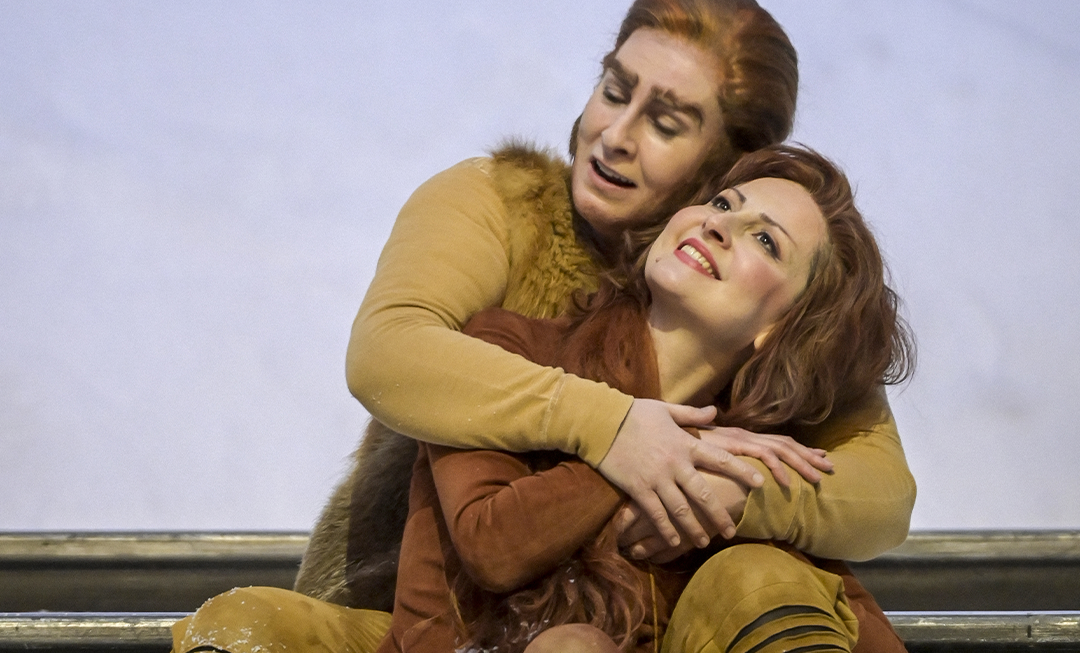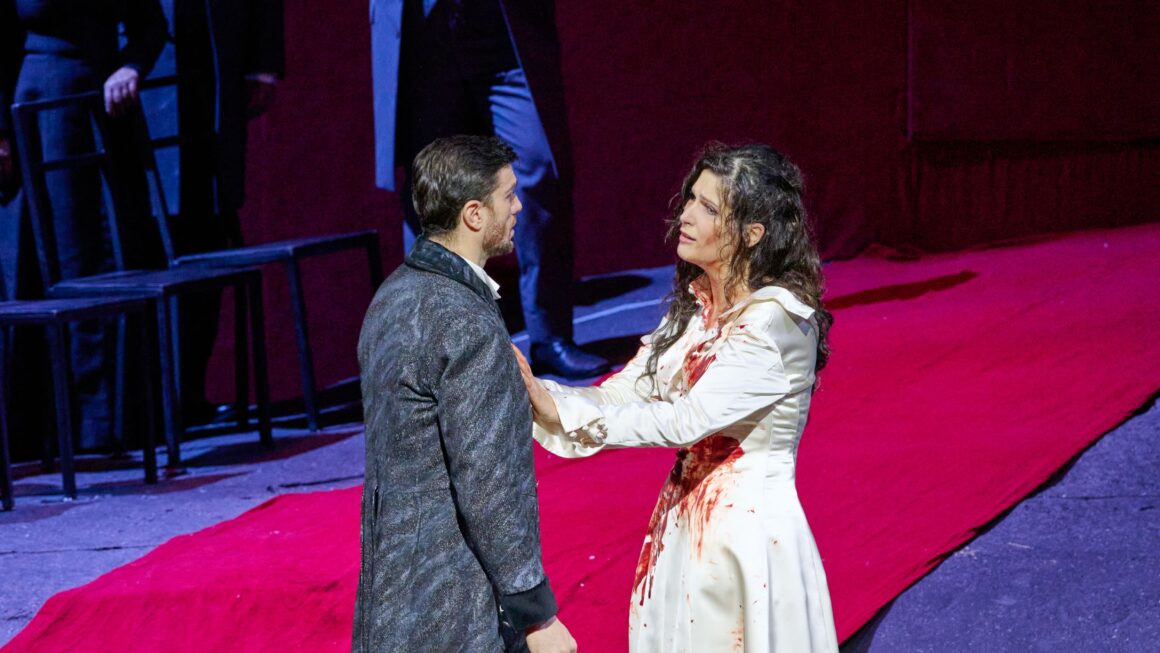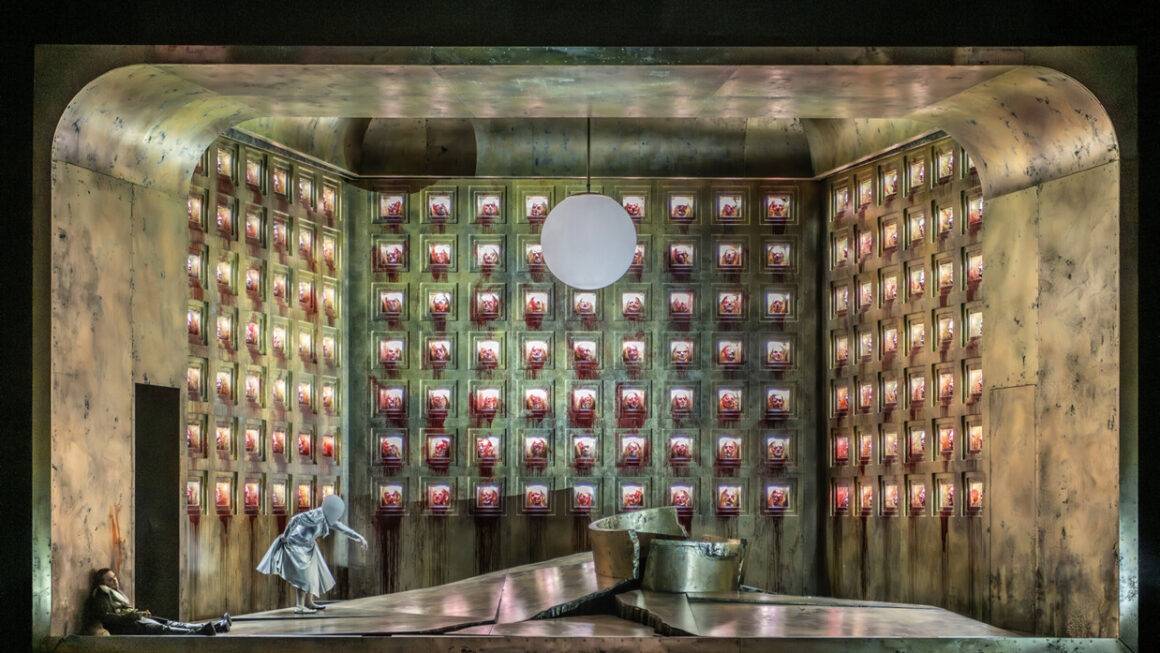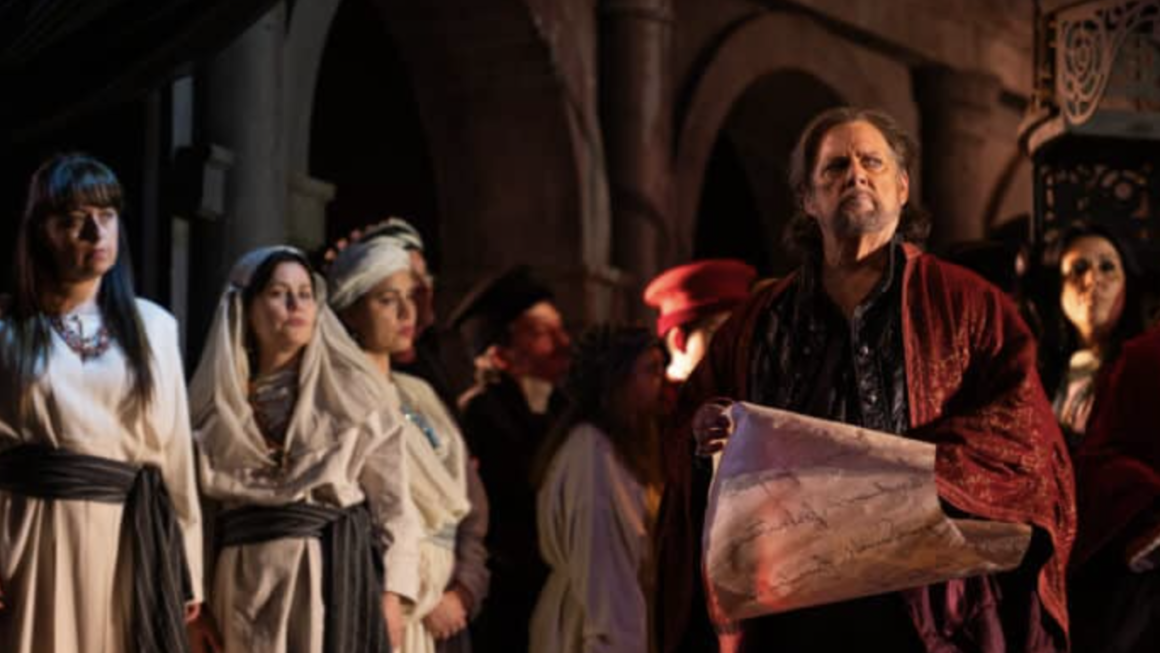No, this is not an opera for children (although there have already been performances for young audiences). It is certainly about animals, with their physical and acoustic characterisation, but this is just one detail, like so many others, that make up this sumptuous and timeless fresco. Because if there’s one work by Janáček that can be heard the world over, it’s Příhody lišky Bystroušky (The Cunning Little Vixen). Curious when you think about it: the first assessment we make, which is often wrong, leads (even the most confirmed amateurs) to restrict the range of possibilities of this opera to the most accessible stereotypes. Two hours are more than enough to demonstrate that this is not the case.
Behind the appropriation of a subject from an illustrated feuilleton (the drawings date from 1890 by Stanislav Lolek, a connoisseur of nature before becoming a draughtsman and painter), whose adventures were put into a narrative by Rudolf Tésnohlídek (and published in 1920), the work of composition and the weaving together of human feelings and animal reality resulted in one of the most performed Czech operas in the world. The graphic and textual sources thus ended up inspiring Janáček to create an opera that is highly pictorial (the suggestions and unspoken words are there, but the impressions, the feelings, everything is materialised in a fairly concrete, even visceral way), where silence (sometimes very powerful, like the silence that follows Bystrouška’s death in Act 3) also has its place: it is an integral part of the opulent array of scenes (more or less well stitched together, the opera being more a succession of scenes). Let there be no mistake: this same silence is not the consequence of an unexpected emptiness, but serves to make more tangible the forest reality that Janáček is trying (and succeeding) in reproducing and, as a result, reinforces the subject.
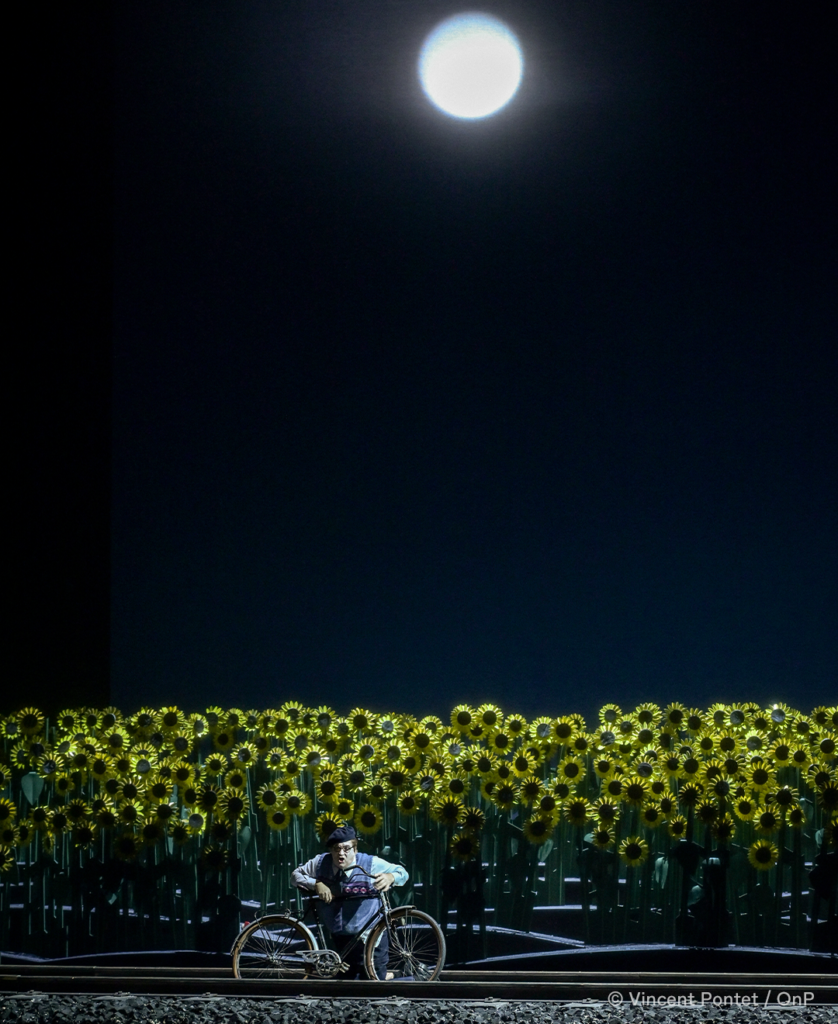
This challenge, far from trivial, is all the more remarkable given the extreme simplicity of the story: Revírník (the Forester, played by baritone Milan Siljanov) captures a young Vixen, Bystrouška (Elena Tsallagova), in the forest and takes her to his home, hoping to turn her into a pet. Bystrouška, suffering in an environment where everything forbids her freedom, escapes and runs off into the woods, where she meets Lišák (the Fox, Paula Murrihy), with whom she falls in love. After marriage and the birth of their fox cubs, Bystrouška and Lišák live happily ever after, until the day Bystrouška is killed by Harašta (the Wanderer, played by Tadeáš Hoza).
The re-staging of the production (initially proposed by André Engel and this time assured by Dagmar Pischel) which was a great success in 2008 at the Opéra Bastille confirms that this opera has a special place in the public’s memory (some of those present at the Bastille on 15th January had already been there in 2008!)… and intrigues those who come to discover it. We happily came to a conclusion that they were not disappointed, thanks to the coexistence of and respect for the three basic pillars of a successful operatic evening:
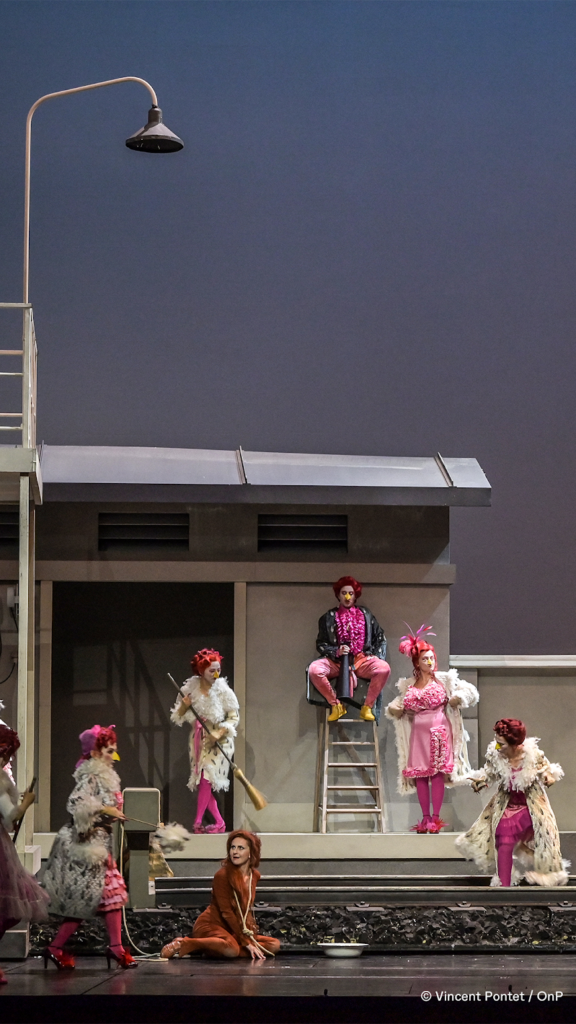
Primo, the playful and entertaining nature of the staging, without falling into a purely childish performance, in order to also respect certain elements of the libretto that need to be the subject of a more elaborate interpretation (Bystrouška’s malice (coated in mischief) is easily recognisable, the villainous gossip of Sova (the Owl), as well as the deep melancholy emanating from the words spoken by Frédéric Caton’s Rechtor and Eric Huchet’s Farář – both perfectly cast in their roles – in the forest during act 2). The whole performance is designed to inspire laughter, emotion and reflection in the audience.
Secundo, the cast. Elena Tsallagova returns to Bystrouška 15 years after bringing her to life, at the start of her (successful) career. Faced with such ease, such joy in portraying her and highlighting the different nuances of Bystrouška, it is difficult to dissociate the role from the performer. We recently had the opportunity to see her at the Deutsche Oper in Zemlinsky’s Der Zwerg (review link available here: DER ZWERG | Deutsche Oper Berlin) and were delighted to see her so deliciously cruellous in the role of Donna Clara – we were overjoyed again to find her in a completely different register, with the oscillations dictated by the libretto, the humour and lightness that make the character so sympathetic to the audience. Technically, she rises to the challenge of delivering the agility demanded by the score, while maintaining a clear articulation of the Czech (impregnated with the dialect of the Brno region!), with a controlled vibrato and a power adapted to the size of the Opéra Bastille. Paula Murrihy, recently at the Opéra de Rouen Normandie for her acclaimed debut as der Komponist in Ariadne auf Naxos (ARIADNE AUF NAXOS | Opéra de Rouen Normandie), brings to life a charming Lišák, with a rather virtuous seduction, totally coherent with her sincere passion for Bystrouška, whom she sublimates with silky singing that perfectly complements that of Elena Tsallagova. Everything is done with finesse and a touch of spontaneity that reflects a real theatrical and musical complicity between these two great performers. Milan Siljanov’s Revírník is superb at every moment of the opera (he is the first to arrive and the last to leave the stage): the character’s different états d’âme (his harshness, his violence, his tenderness, his nostalgia, his serenity at the end of the opera…) are rendered with such truth that, just as Bystrouška arouses real empathy in the audience, we identify with the humanity of the Forester. Baritone power enlightened by a deep knowledge and understanding of the Janáčekian universe, seeing Milan Siljanov on stage one would be tempted to recast the opera’s title: The Cunning Little Vixen… and her all too human Forester. Tadeáš Hoza’s Harašta, while maintaining the imminently popular character of the role, has a slightly cunning finesse that is surprising initially, but perfectly suited to the playing of this Bass. Without becoming sympathetic, his charm and the accuracy of his words and singing do not fail to impress. The other artists in the cast deliver a quality performance, with a special mention for the many children who embody the people of the forest (Prague Philharmonic Childen’s Choir).
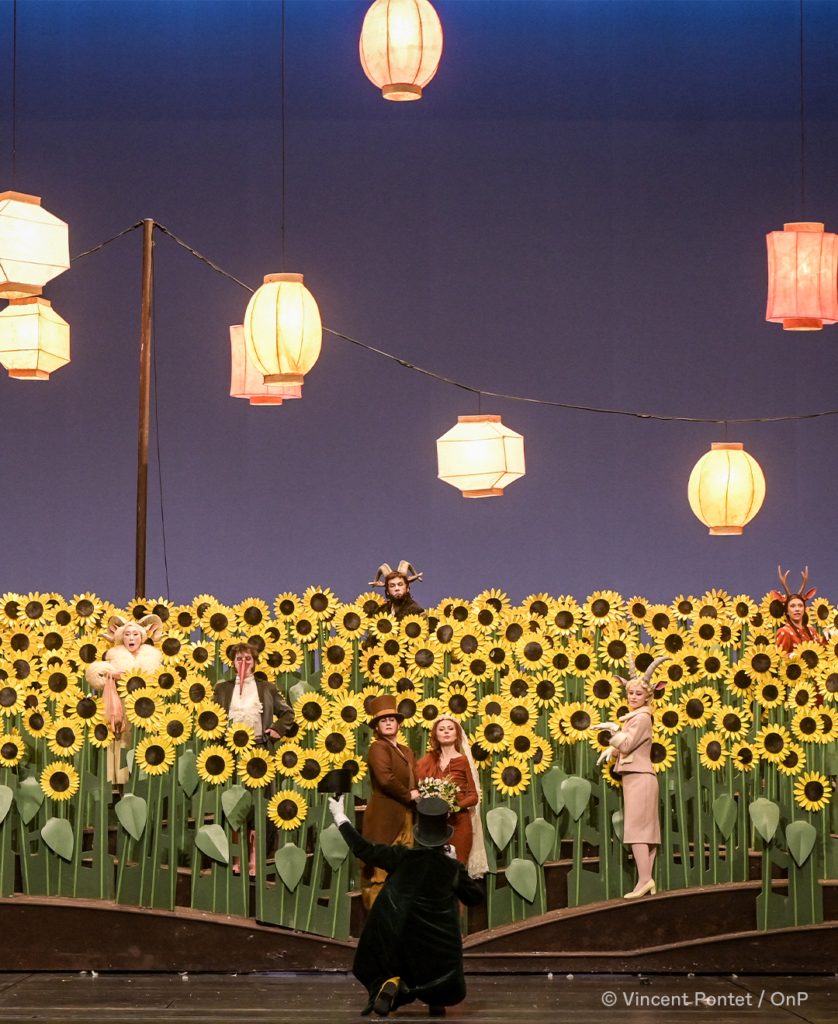
Tertio, the orchestra. It does not play, it becomes the most poetic expression of nature that can be formulated under the guidance of Juraj Valčuha. Sometimes you get the impression that the orchestration is going to get carried away: an impression that is quickly put to rest by the intervention of a conductor who knows how to contain the ardour of the Opéra National de Paris orchestra, while mobilising its power at the right moments according to the proportions imposed by the score. We wonder how much effort was required to achieve such a quality of execution, to create this forest symphony, despite all the roughness and harshness that abound in the score. It is thanks to a rare discernment, coloured by touches of a pleasant naturalism, and an ability to fully penetrate Janáček’s music that all the gaps scattered between the scenes that make up the opera are easily overlooked, in favour of a musical-narrative coherence decorated by counter-fields that allow the audience to better grasp the meaning of what is being said.
As the opera programme points out, “Whereas Janáček’s operas Káťa Kabanová, Jenůfa or Z mrtvého domu shed light on his interest in the condition of the stigmatised, Příhody lišky Bystroušky reveals another aspect of his humanist empathy for all living things. By giving voice to the animal world, the composer places it on an equal footing with the human world.”. The parallels with today’s world are undeniable: is this not one reason (among many others) to take a close interest in this sensational masterpiece?
Casting: Bystrouška, the Vixen (Elena Tsallagova), Lišák, the Fox (Paula Murrihy); Revírník, the Forester (Milan Siljanov), Harašta, the Wanderer (Tadeáš Hoza), Rechtor, the Schoolmaster, and Komar, the Mosquito (Éric Huchet), Farář, the Priest (Frédéric Caton). Orchestra and Choirs of Opéra National de Paris. Prague Philharmonic Childen’s Choir.

